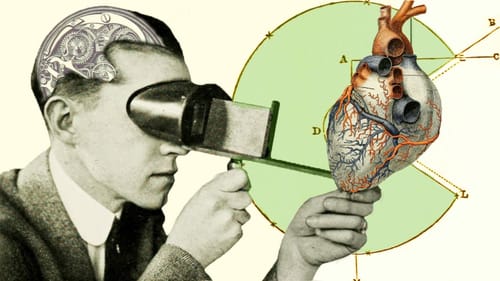The surprise came in understanding how these signals from the heart affected the brain function when we started doing some experiments on intuition. This is because there are three types of intuition that we have identified. The surprise came in one of the three categories we call non-local intuition.
Locating the body’s true first responder
When we were looking, very rigorous experiments, people were wired up to equipment and other measures. We were wanting to look at the flow of this information. These are experiments to show that physiology will react before a future, unknown event is presented. This has been confirmed independently in multiple labs now. The surprise came when, with hindsight, the heart was the first to respond.
The heart responds first, then sends a measurably different neurological signal to the brain, which gets, very quickly, to the frontal cortex, and then you have a body response. The gut feeling, right? When you feel it, or the hair on the back of your neck—if you’re paying attention, it becomes a conscious, felt experience. The real flow of information was heart, brain, body. If you’re paying attention, you have the feeling, so the gut gets the credit a lot of times, but it’s really heart, brain, body, and that way.
How do you increase your intuition?
We also found that if people get themselves into what we call a coherent state—a heart coherent state—that facilitates neural communication in those intuition experiments. It’s increasing our access to our intuitive capacities by even just sitting in a coherent state for a few minutes.
Interestingly, the way I got that published back in the late ’90s was to talk about the heart appearing to have access to a field of information that wasn’t bound by the limits of time and space.
The people behind the discovery and re-discovery
What we’re showing is what all great philosophers and religions around the planet have been talking about for millennia; the heart is that doorway to a deeper part of yourself. I call that my larger self and every culture has their word for it, your higher self or your spirit or your soul or the implicit order, implicative order. In fact, what we mean by heart intelligence here at HeartMath is accessing that deeper part of ourselves which literally, not metaphorically, is via the energetic, physical heart, then down into the mind-brain-body systems.
That was a surprise that we found—clearly that it was heart first. I mean, in ancient times, the heart was clearly viewed by many as the seat of the soul. In more modern, western terms, it’s really interesting, in fact.
William James
William James. A lot of people in healthcare and science would know who he is. He’s considered the father of modern psychology. The late 1880s was all about the heart, actually, and the body. The brain was basically interpreting signals from the body and creating emotional experiences. This type of thing was the foundation of psychology for many, many years.
This is rediscovering a certain way here, and then keep in mind that very little was known about the nervous system, the autonomic nervous system, hormones. None of this was discovered yet—to look at things like heart rate and these types of things.
William Walter Cannon
In the 1920s, Walter Cannon came along for this. He was just starting to be able to understand the sympathetic nervous system and these types of things. The first hormone was just being discovered at that time. He came up with some very good concepts that are accurate, like fight/flight response, sympathetic system, and all this.
So, that shifted the paradigm. Cannon suggested James was wrong; The brain was in charge of everything, the body was just there to carry the head around, and that the body and all the responses just dance to the tune of what the brain said, in a very dumb way. You had a sympathetic response. Everything was going to dance in concert to that, so that became the paradigm. Then more hormones were discovered, and we started to understand more about the brain, so it’d become a very brain-centric paradigm at that point.
Challenging perspectives to shift the paradigm
And that paradigm still has its carryovers in some areas of science that haven’t caught up yet. Then in the late 1960s and ’70s, what literally started shifting back to a more balanced perspective was observations of the heart.
That was done by some very famous DOW researchers in the psychophysiology field. They’re called the Lacies. A husband and wife team saw that the heart, in particular, didn’t fit Cannon’s perspective. You could have an increase in sympathetic activity, but the heart rate would slow down.
But that’s not supposed to happen, because it’s this dumb system, you know? Or vice versa. You could have decreased sympathetically, the heart rate would speed up, and so the heart was acting as if it had a mind of its own. That was some of the ways they wrote about it, and that actually started the investigations to say, “Wait a minute. Something’s not fitting the model.”
You had a very strong paradigm of belief in science at that time. They got a lot of flack for their observations and criticized a lot. Of course, they were eventually proven right and vindicated and won all kinds of career awards. That lead to a whole new opening in science that Cannon’s basically wrong about a lot of his things, that the autonomic system is very intelligent, that the body doesn’t just react in this universal way.
